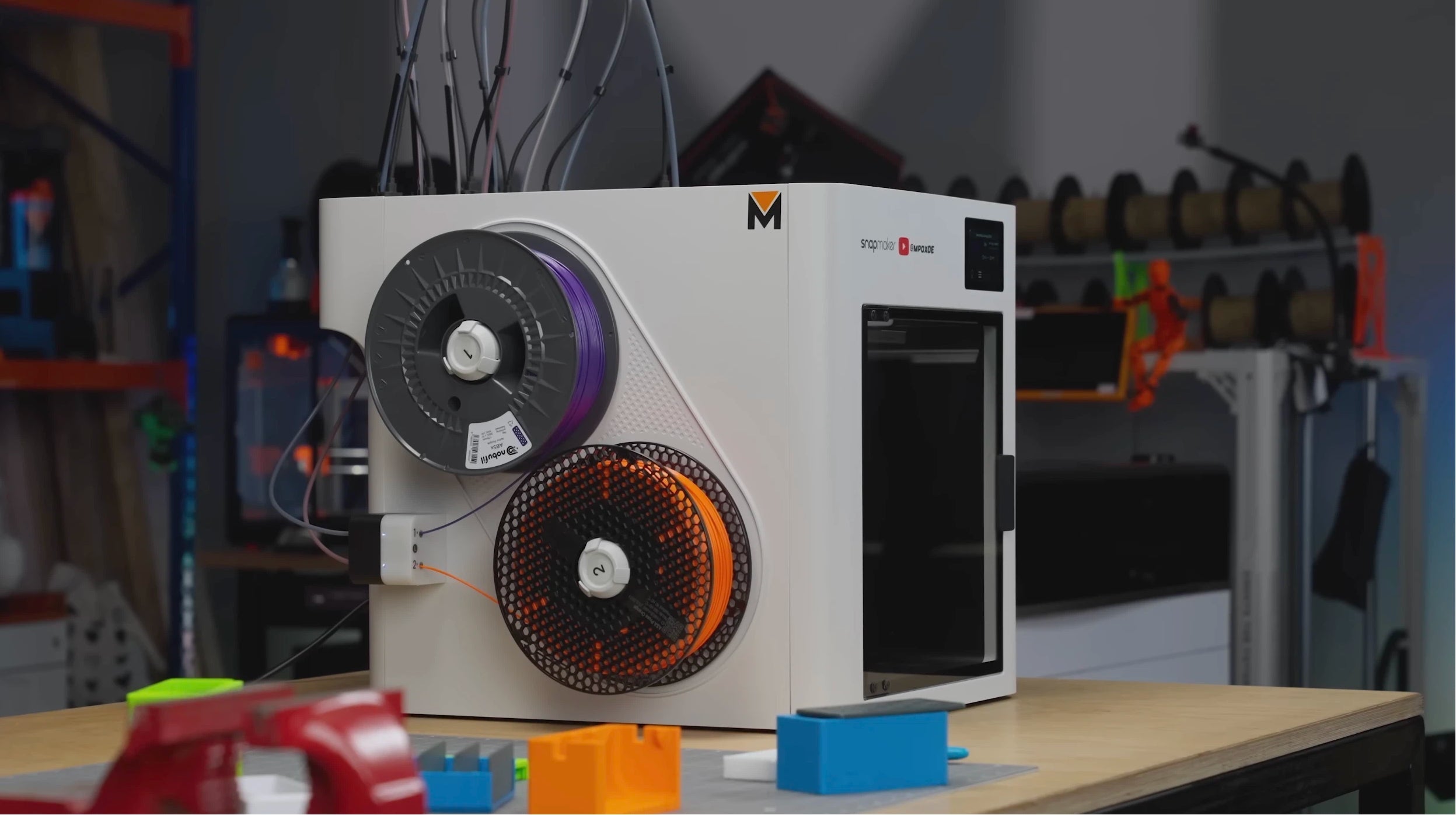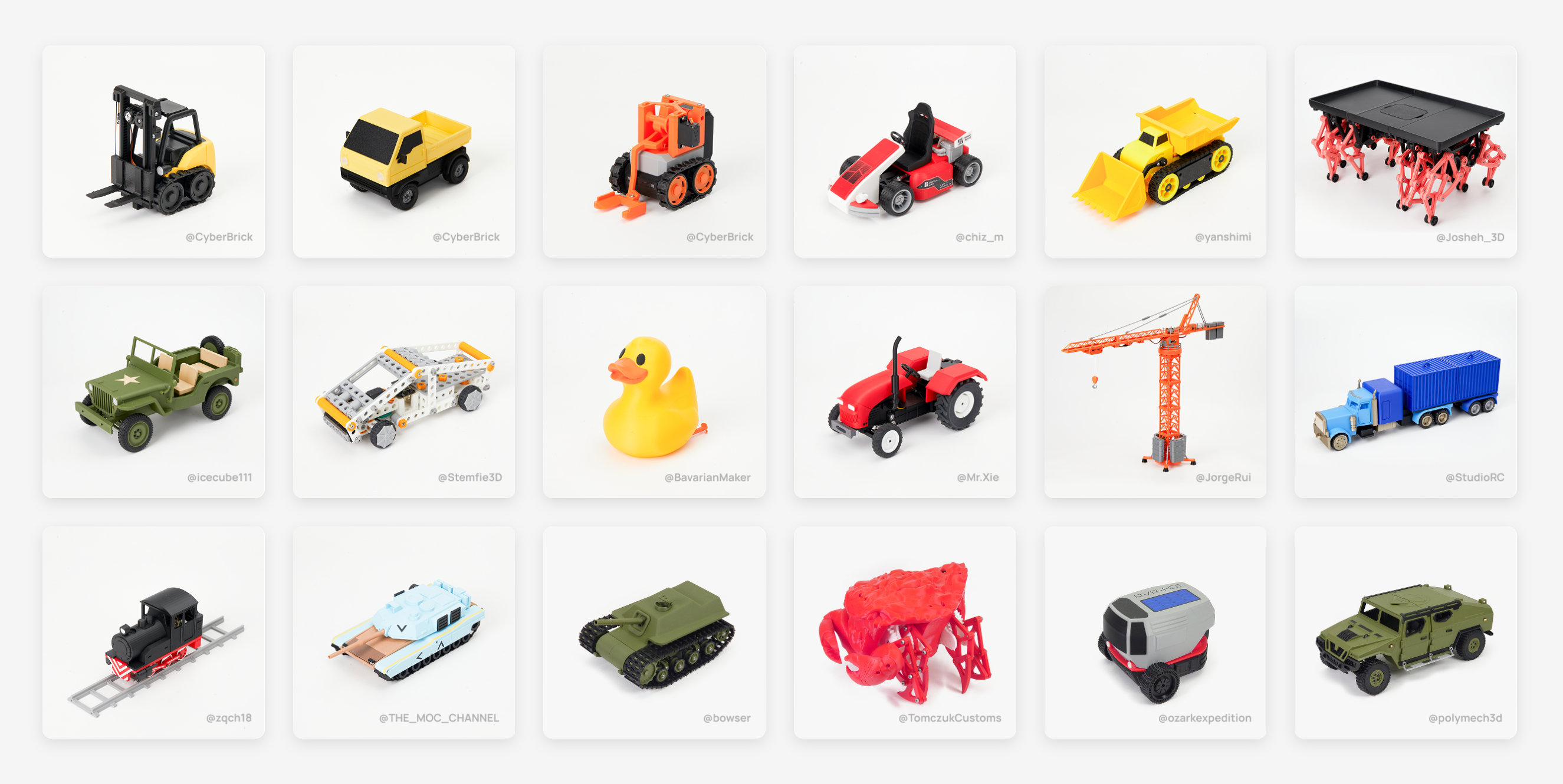Kate G. - Feb 21st, 2025
Heater Chambers: The Key to Unlocking the Full Potential of 3D Printing?

In the world of 3D printing, achieving consistent, high-quality prints is a top priority for users. As the demand for precision and reliability grows, especially among Bambu Lab X1/P1 users, the need for stable temperature control during the printing process has become more critical than ever. This is where Chamber Heaters come into play—a game-changing solution designed to enhance print quality, reduce failures, and expand material possibilities.
What is a Chamber Heater and Why Does It Matter?
A Chamber Heater is a device that maintains a stable, elevated temperature inside the 3D printer's build chamber. This is particularly important when printing with engineering-grade materials like ABS, ASA, nylon, or advanced composites like PPA-CF. Without proper temperature control, these materials are prone to warping, cracking, and poor layer adhesion, leading to failed prints and wasted resources.
In the early days of 3D printing, enthusiasts often built DIY enclosures to improve print quality for materials like ABS and ASA. While modern printers now come with built-in enclosures, they often fall short when it comes to handling industrial-grade materials. This is where dedicated Chamber Heaters, like those designed for Bambu Lab X1/P1, step in to bridge the gap.


How Does a Chamber Heater Work?
Chamber Heaters are designed to create a controlled environment inside the printer, ensuring consistent temperatures throughout the printing process. Here’s how they work and why they’re essential:
1. Reduces Thermal Deformation
Materials like ABS, nylon, and PPA-CF are sensitive to rapid cooling, which can cause warping or cracking. A Chamber Heater maintains a stable ambient temperature, allowing prints to cool slowly and evenly, minimizing these issues.
2. Improves Layer Adhesion
By keeping the build chamber warm, Chamber Heaters help each layer of the print fuse more completely. This results in stronger, more durable parts with better structural integrity. User tests have shown that ABS prints, for example, exhibit significantly improved interlayer bonding when a Chamber Heater is used.

3. Expands Material Compatibility
With precise temperature control, 3D printers can handle a wider range of materials, including high-performance filaments that require specific conditions to print correctly. This opens up new possibilities for applications in industries like automotive, aerospace, and robotics.
Key Features to Consider When Choosing a Chamber Heater
When selecting a Chamber Heater, there are several critical factors to keep in mind:
1. Temperature Range
Most Chamber Heaters can maintain a build chamber temperature between 45°C and 70°C. However, the ambient temperature of the room can affect performance. For optimal results, ensure the room temperature is at least 12°C, and the heated bed reaches the required temperature for the filament.
2. Energy Efficiency
Chamber Heaters typically consume between 100W and 250W, depending on the model. Higher-end models often feature better insulation and more efficient heating elements to reduce energy consumption.
3. Safety Features
Safety is a top priority. Most Chamber Heaters come equipped with built-in temperature controllers, fuses for overcurrent protection, and PTC (Positive Temperature Coefficient) heating elements. PTC heaters automatically regulate their temperature, preventing overheating and reducing the risk of fire or burns.
How PTC Heaters Work:
PTC heaters use ceramic heating elements combined with aluminum tubes. As the temperature rises, the resistance of the ceramic element increases, limiting current flow and achieving automatic temperature regulation. This ensures the surface temperature never exceeds a safe threshold, eliminating risks like burns or fire hazards.

Here’s a quick overview of some popular Chamber Heater options:
Chamber Heater for Bambu Lab (WiFi Version)
The newly upgraded Chamber Heater for Bambu Lab (WiFi Version) offers 3D printing enthusiasts an unprecedented level of convenience. With its powerful WiFi functionality, you can now control the heater remotely using just your smartphone. Whether you're at home, in the office, or on the go, you can easily turn the heater on/off, adjust temperatures precisely, and monitor real-time temperature data to ensure a smooth 3D printing process.
Pros:
• Remote Control: Manage the heater from anywhere using your smartphone.
• Durable Build: Made with advanced ABS-CF material, ensuring high durability, heat resistance, and impact resistance.
• Precision Crafting: Expertly printed using Bambu Lab machines for superior quality.
• Convenience: Ideal for users who can't always monitor their 3D printer in person.
Cons:
• No 5G Support: Limited to WiFi networks, excluding 5G connectivity.This smart chamber heater revolutionizes 3D printing by offering efficiency, flexibility, and peace of mind.
Chamber Heater for Bambu Lab (Smart Version)
The Chamber Heater for Bambu Lab (Smart Version) ushers in a new era of intelligent 3D printing heating solutions. Designed for ultimate convenience, this version eliminates the need for manual operation.
Pros:
• Automated Temperature Control: Automatically starts and stops based on user-defined temperature settings.
• Ease of Use: Simply set your desired temperature via the device, and let the heater handle the rest.
• Advanced Functionality: Perfect for users seeking a hands-off, automated experience.
Cons:
• No Remote Control: Cannot be controlled via a smartphone app.
• Higher Price: Slightly more expensive compared to other versions.
This version is ideal for users who value automation and precision but don’t require remote control capabilities.
Chamber Heater for Bambu Lab (Manual Version)
For beginners stepping into the world of 3D printing, the Chamber Heater for Bambu Lab (Manual Version) is an excellent entry-level choice.
Pros:
• Simple Operation: Easy-to-use buttons for turning the device on/off and adjusting temperature.
• Affordable Price: Focuses on core heating functionality, offering great value for budget-conscious users.
• Beginner-Friendly: Perfect for those new to 3D printing who want to learn the basics.
Cons:
• No Remote Control: Requires manual operation; cannot be controlled via a smartphone app.
• Limited Features: Lacks advanced functionalities like automated temperature control.
This version is a practical and cost-effective option for beginners looking to explore 3D printing without breaking the bank.
Chamber Heater for Creality K1 & K2 Series
Designed specifically for the Creality K1 and K2 series, this chamber heater is a game-changer for users seeking a balance of affordability and easy installation.
Pros:
• Perfect Fit: Compact design seamlessly integrates with Creality K1 and K2 printers without disrupting the machine's layout.
• Cost-Effective: Offers a high-quality heating solution at an affordable price, making it accessible to a wide range of users.
• Easy Installation: No modifications to the printer's existing wiring are required. Follow the simple installation guide, and you're ready to go.
• Time-Saving: Quick setup allows users to start printing faster with minimal effort.
Cons:
• Limited Compatibility: Designed exclusively for Creality K1 and K2 series, not suitable for other printer models.
• Basic Features: Lacks advanced functionalities like remote control or automated temperature adjustments.

If you own a Creality K1 or K2 series printer and are looking for a reliable, budget-friendly heating solution, this chamber heater is the perfect choice for you. Its ease of installation and cost-effectiveness make it an excellent addition to your 3D printing setup.
Conclusion: Is a Chamber Heater Worth It?
For anyone serious about 3D printing, especially with high-performance materials, a Chamber Heater is a worthwhile investment. It not only improves print quality by reducing warping and enhancing layer adhesion but also expands the range of materials you can work with. Whether you’re a hobbyist or a professional, a Chamber Heater can help you unlock the full potential of your 3D printer.
So, if you’re ready to take your prints to the next level, consider adding a Chamber Heater to your setup. Your prints—and your patience—will thank you!



